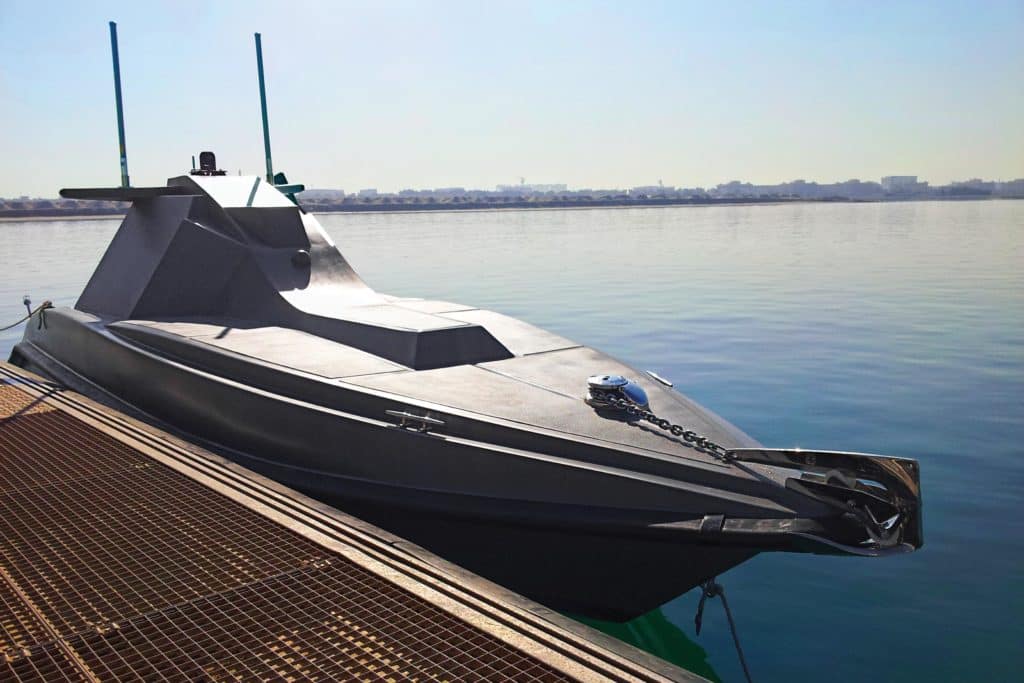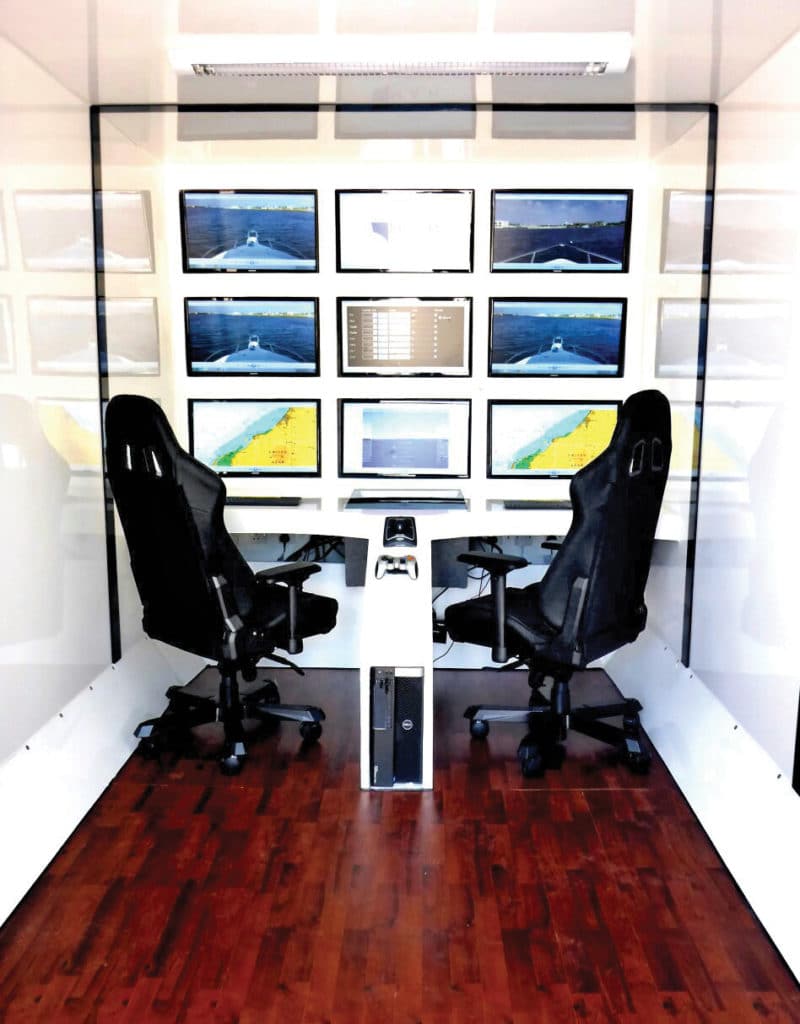
Spend enough time on the water, and the odds are excellent you’ll find yourself aboard for a less-than-lovely delivery trip. I remember one particularly hot, humid and utterly miserable ride down Long Island Sound following a Downeast cruise. A greasy horizon, 98-degree swelter and midday sun transformed my family’s J/44 into a sauna, while the vacuumlike “breeze” rendered her a horrendously slow powerboat. As our estimated time of arrival slowly ticked closer, I remember wishing that Southern Cross could have miraculously transported herself — sans crew — from Lubec, Maine, to her Stamford, Connecticut, mooring. Now, MAP Technologies is making this sunshine daydream a reality. The company’s MAP Pro system harnesses the global communications network, as well as a bevy of onboard sensors, instruments and integrated relay switches, to turn any auxiliary-powered vessel into an unmanned surface vessel (USV). MAP Pro doesn’t employ autonomous collision-avoidance systems or artificial intelligence, but instead relies on shore-based crew to stand watch. This system allows a yacht to be operated from anywhere and can convert back to manual-operations mode with just a few screen taps.
At its core, MAP Pro is a black box containing a nine-axis compass, a sophisticated autopilot and control system, and platform-agnostic communications abilities. The black box includes an Ethernet port, allowing the system to interface with any onboard sensor or instrument, plus an NMEA 2000 gateway can be added to increase networking capabilities. MAP Pro uses relay switches to power networked systems on and off, and it can control the engine’s throttle and gearshift. Unlike most other onboard electronics, MAP Pro ($35,000) doesn’t interface with the navigation system, but instead aggregates raw sensor data and feeds it into its black-box processor, which is shared with its ground control station (GCS).

In terms of minimum system requirements, MAP Pro needs at least one IP-enabled electro-optical infrared or thermal-imaging day/night camera, a GPS, a radar, a secure router and an IP-enabled mesh radio. Owners can bolster their situational awareness by adding networked cameras and integrating the vessel’s automatic identification system (AIS).
“Everyone has the third-party sensors that they need,” says Bud Peppe, MAP Technologies’ director of engineering and integration. “[We] give them the brains.”
MAP Pro has an autopilot control head built into its black box. Peppe says the system plays well with any third-party sensor and third-party autopilot controls. “No other autopilot controls speed,” adds Matthew Howarth, MAP Technologies’ business development manager.
Recognizing that auditory communications are important, MAP Pro can be spec’d with a long-range acoustic device and a directional microphone. “We use a loud hailer with a directed beam that allows us to focus the energy so that you can have [two-way] communications over 1,700 meters,” Peppe says.
In terms of minimum system requirements, MAP Pro needs at least one IP-enabled electro-optical infrared or thermal-imaging day/night camera, a GPS, a radar, a secure router and an IP-enabled mesh radio. Owners can bolster their situational awareness by adding networked cameras and integrating the vessel’s automatic identification system (AIS).
“Everyone has the third-party sensors that they need,” says Bud Peppe, MAP Technologies’ director of engineering and integration. “[We] give them the brains.”
MAP Pro has an autopilot control head built into its black box. Peppe says the system plays well with any third-party sensor and third-party autopilot controls. “No other autopilot controls speed,” adds Matthew Howarth, MAP Technologies’ business development manager.
Recognizing that auditory communications are important, MAP Pro can be spec’d with a long-range acoustic device and a directional microphone. “We use a loud hailer with a directed beam that allows us to focus the energy so that you can have [two-way] communications over 1,700 meters,” Peppe says.
Specs aside, MAP Pro requires a full-time human operator anytime the vessel is cruising. “There should always be a human in the loop, observing the sensor data coming in,” Howarth says. “We never say ‘set it and forget it.’”
While owners can use MAP Pro’s IP-enabled mesh radio for short-range communications and control, the range for all radio communications is determined by antenna height and power, and — ultimately — Earth’s curvature. Because of this, MAP Pro integrates with third-party satellite-communications systems. In all cases, vessel sensor information is sent to the GCS in near-real time, allowing the “human in the loop” to make all decisions.
While GCS conjures images of NASA moonshots, Howarth says a GCS can be just a single screen and controller inside a Pelican case, or it can involve multiple large touchscreens permanently fitted in a house, office or even a shipping container.
“If there’s a control station [at an owner’s house], say for home security, we can integrate [our GCS] in with [it],” Peppe says. “The older generation wants the








